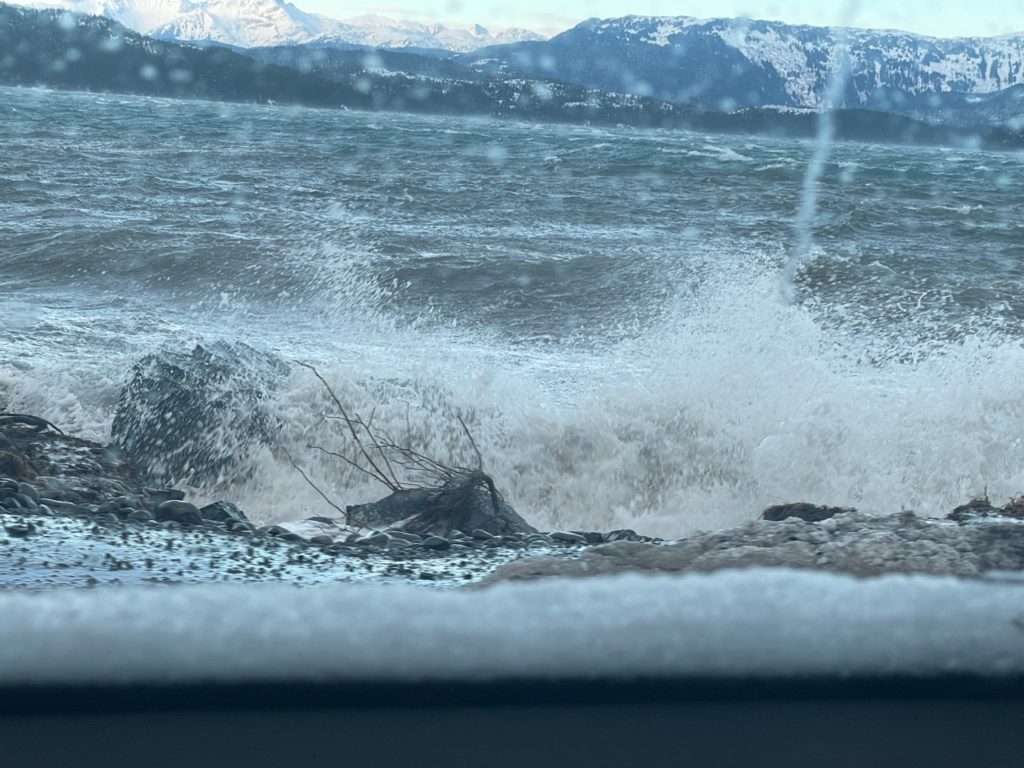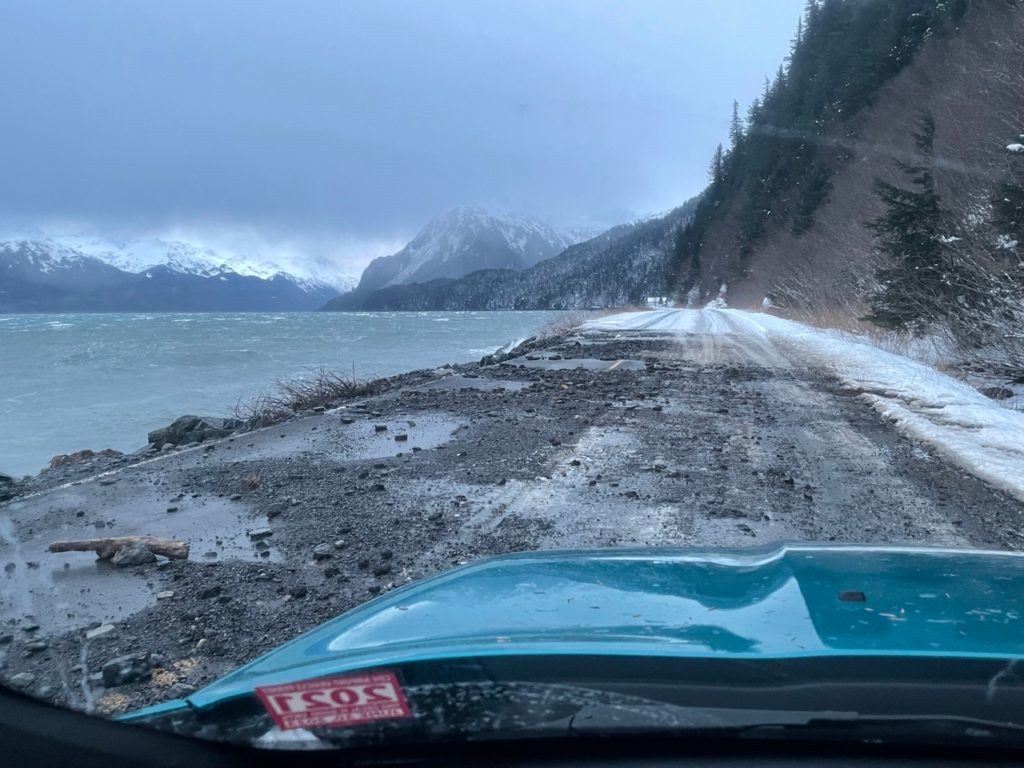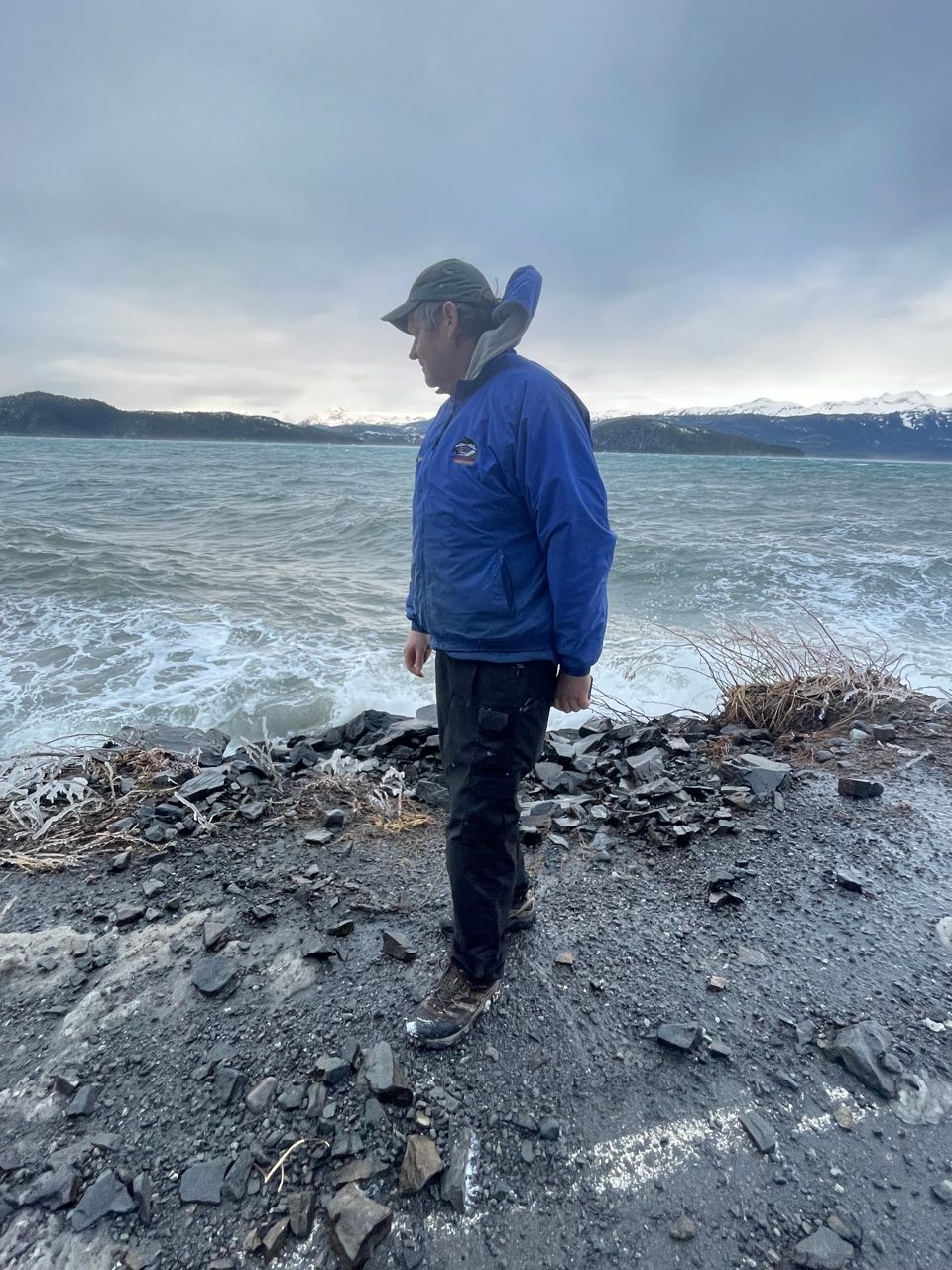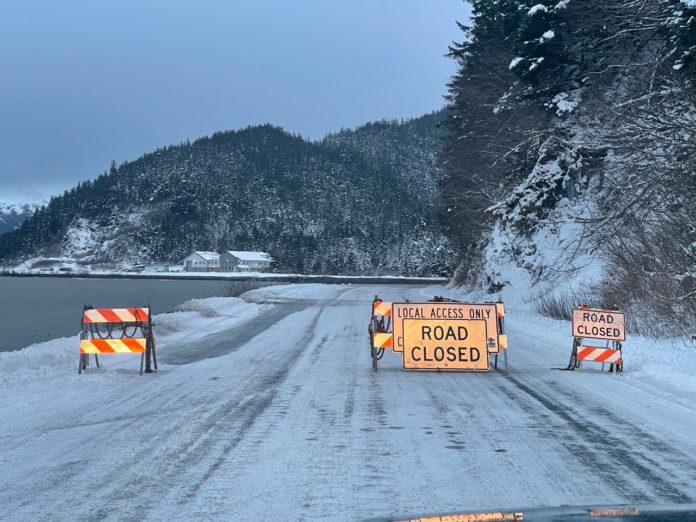For the second year in a row, a combination of high winds and big tides caused significant damage to Orca Road. Erosion this past Dec. 22-24 made it necessary to close the popular state byway, which runs two miles from the ferry terminal to the Orca Adventure Lodge.
The paved road also provides access to the new Prince William Sound Science Center, plus the city burn pile, which many Cordovans seem to frequent on a daily basis. It was built in the early 1960s to connect town with the large New England cannery located at Orca.
The cause of the recent damage is open for debate. The road seemed to survive winter storms for more than 50 years, and surely there were big tides during that time that coincided with the well-known fierce north winds that roar down Orca Inlet from Nelson Bay in the winter.
Could rising sea levels be the cause? Seems unlikely. Cordova Harbormaster Tony Schinella, who has a first-hand view of the water level in the boat harbor, hasn’t noticed any such change.

A more plausible cause may be the gradual long-term weathering of the seaward side of the road, from constant exposure to the effects of wind, ice and tides. Local Department of Transportation (DOT) personnel have noticed it has been slowly undercut.
Wendy Ranney of Orca Adventure Lodge blamed this year’s damage on a phenomenon known as King Tides, a name for extremely high tides that occur when the sun and the moon are closest to the Earth and exert more gravitational pull. Indeed, the tide book for the Cordova District indicated a high tide of 15.3 feet on Dec. 22, 15.7 feet on Dec. 23, and 15.8 feet on Dec. 24.

As any local fisherman can tell you, wind can have a huge impact on tides, creating what is called a storm surge. When the wind was howling during these particular December tides, Eric Weathers, who has a dock by his place in nearby Deep Bay on Hawkins Island, reported tides of at least 18 feet.
Repairs to the road were completed this January by local DOT personnel. With rock and gravel from the mountain side above the road, they filled in the eroded portions enough to safely reopen the road. They’ll be first to admit it is a temporary fix at best.
Shortages in manpower and funding continues to hamper general DOT maintenance efforts. They have been unsuccessful in filling three equipment operator positions for some time, and priority number one is keeping the airport at Mile 13 open. Ironically, funding to tackle the recent repairs was also impacted by the big storms that pounded Western Alaska, creating flooding and disaster conditions that demanded emergency efforts by the state.

The good news is that the state is seeking bids on a project to effect major repairs and a more permanent solution to the problem. The cost of such work is an unknown variable, but it only takes a tide book to know when big tides will occur again this coming December, available for free at many businesses around town.
The real wild card is the weather, which despite modern technology often can’t be predicted correctly for even 24 hours.
As a lifelong Cordovan, I’m betting there will be some fierce north winds in December. Hopefully the road will be properly repaired by then.
And here’s something else to ponder: due to global warming, scientists predict within 30 years sea level will be close to what we now see during King Tides, which means waves will be splashing over the road on a pretty regular basis.






